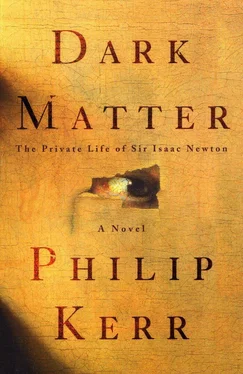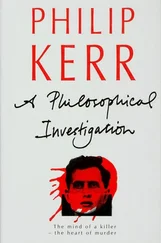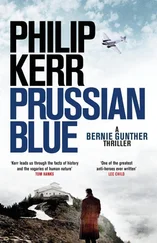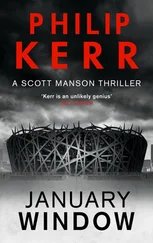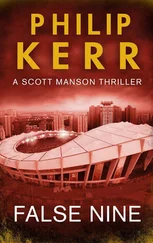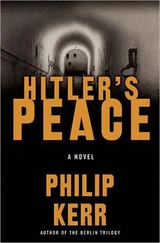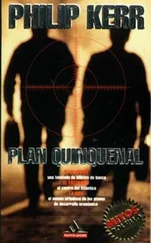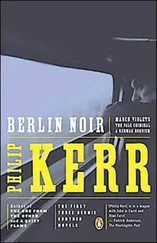
“ Y occurs after E , which causes us to increment the keyword by one letter to F This is true of T, Q , and U , but not H , so that our next keyword becomes FMMJS . This gives us:”

“In the same way X, Q , and V modify the first three letters of our new keyword, FMMJS , so that it becomes G, N, N . But C and F being before L do not cause it to be incremented, and so we have a new keyword, GNNJS . Finally we end up with this:”

“To undo the cipher you subtract the numerical values of the keyword from the numerical value of the cipher and add 26 each time. For example, Y equals 25, minus E equals 5, gives us 20, plus 26 makes 46 which makes the letter T; similarly, the last letter of our cipher A equals 1, minus G equals 7, gives us minus 6, plus 26, makes 20 equals T .
“It was a most brilliant mathematical variation, for the system becomes almost inscrutable.”
“How did you solve it, sir?”
“Thanks to Mister Scroope’s ignorant variation, I almost did not solve it at all,” confessed Newton. “He was clever enough to introduce a small mathematical series into the sample he chose from the first message he had from George Macey. He simply added one to the first letter, and then subtracted one from the second letter; then he added two to the third letter, and subtracted two from the fourth letter; and so on. It was some time before I perceived that the message chalked upon the wall near Mercer’s body was also the first line of the letter we found in Macey’s message. And having seen this, I recognised how the cipher had been used ignorantly, without apprehension, and was intended but to further darken my own understanding. It was only when I dispensed with this message altogether that the other letters began to demonstrate some mathematical consistency.
“As to solving the rest, I must confess to an element of good fortune that came my way. Nothing works more to undermine the secrecy of a code than man’s own frailty. For man is the natural enemy of mathematics, being most prone to error and habit. The plotters have consistently used two phrases as an exhortation unto their own inordinate zealotries and fanaticism. For, as you shall soon see, that is what they are: zealots and fanatics of a most egregious variety, mighty dangerous to the safety of the realm.”
Newton tried to show me the many differentiations he had made during his months of work, but there were so many quadratic expressions that he only very slightly demonstrated to my understanding how the cipher had been solved. Later on I understood it better, for I copied a letter that Newton did write to Wallis, in which he explained the workings of the code in detail, but not his mathematics, for he said that would have been to show Wallis the workings of his own mind, and he had no mind at all to do that.
But at the time all that algebra made my head ache as if I had been back in school, or in my sickbed the time Newton had thought to stimulate my recovery by explaining to me his system of fluxions; and yet the messages were clear enough and revealed a glimpse of something dreadful that was still very much afoot in the Tower.
“The two phrases they used regularly and to their eventual detriment were ‘Remember Saint Bartholomew’s’ and ‘Remember Sir Edmund Berry Godfrey.’”
“That was the sentiment on Mornay’s dagger,” I cried.
“Exactly so,” said Newton. “It was also part of the phrase that Scroope chose to embellish. Now the first message we had was upon Mister Kennedy’s dead body, put there by Mister Scroope, who had it from Mister Macey, neither of whom had any apprehension as to what it meant. I do not suppose we shall ever know how Mister Macey came to intercept this message. But I suspect that the men who have been using this cipher are so confident of its Sphinxlike imperspicuity that they have taken few precautions with where they left their correspondence. And so Macey may simply have stumbled upon it accidentally.”
Newton read out his translation: “‘Remember Sir Edmund Berry Godfrey. Dear Doctor Davies, I do not think we should meet as you suggested. If you were recognised visiting my house, or we were ever seen together, the news might appear in every farthing paper in the land. But I would wish to know from you by what method Roman Catholics are to be identified. You may communicate with me by letter as always through Major Mornay. Remember Saint Bartholomew’s. Yours, Lord A.’
“I believe ‘Lord A.’ is none other than Lord Ashley, the Member of Parliament for Poole, whom our spies reported that Major Mornay visited. He is the grandson of the Earl of Shaftesbury, Anthony Ashley Cooper, who once led extreme Whig opposition to the King. He was a notorious Green Ribboner and republican who fled to Holland after the Rye House Plot against King Charles.”
“I have heard that phrase,” said I. “Green Ribboner. My father used it as a term of opprobrium, but I never knew what it meant.”
“During the reign of Charles II, the Green Ribboners posed more of a danger to this realm than the French,” explained Newton. “They were a group of extreme Whigs who hated Roman Catholics almost as much as they hated monarchs, and wished to see the extinction of both in England. They would have restored the Republic and made Richard Cromwell Lord Protector once again.
“It is certain that the Green Ribboners fomented a number of plots to kill King Charles, or Roman Catholics, of which the Popish Plot of 1678, led by Titus Oates, that manufactured a false Catholic plot against the King, was the most vile — for many Catholic priests were falsely accused and put to death.
“But little or nothing has been heard of these Green Ribboners since Shaftesbury’s death, in 1683, and the Glorious Revolution that deposed the Catholic King James. With so many real Catholic plots to depose King William — first Ailesbury, then Sir John Fenwick — what need would there be to create rumours of false ones?”
“Perhaps,” I suggested, “Lord Ashley and his correspondent have endeavoured to discover if there are any more Catholics who plot against King William. I should think that every patriotic Englishman would wish to identify potential traitors among us.”
“Suspend your judgement just a short while longer,” counselled Newton. “Consider next this message we had from Doctor Wallis, which Macey gave him. I believe it provides the answer to the first message.
“‘Remember Saint Bartholomew’s. Milord A. We shall identify Roman Catholics as were the French Huguenots. From the tax rolls. Also I have lists from the last time that were made by constables for the justices of the peace; also a guide made by Mister Lee, a map by Mister Morgan, and a scheme by Mister King that shall show us where all these nests of Catholic vermin are to be found. None shall escape us. Your servant, Doctor Davies.’
“Now what is your opinion?” asked Newton.
“I confess it sounds like another Popish Plot,” said I.
“It is much more serious than that,” Newton said gravely. “‘None shall escape us’? Is the matter not yet clear to you?”
“Yes, only I am afraid to say it, Doctor.”
Читать дальше
